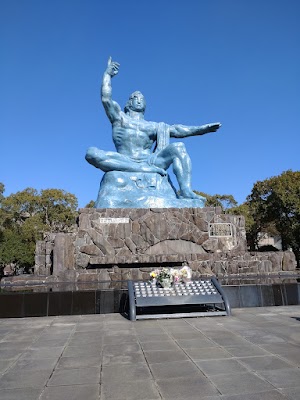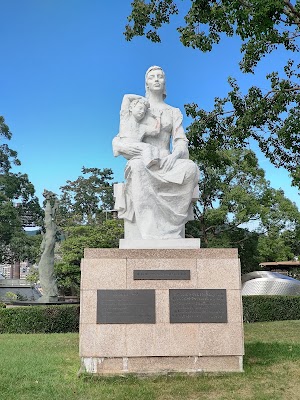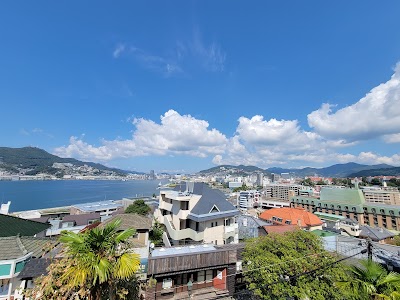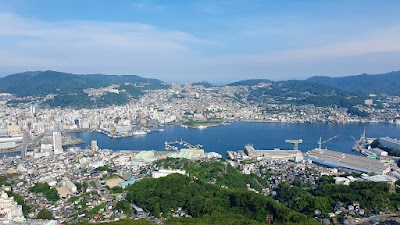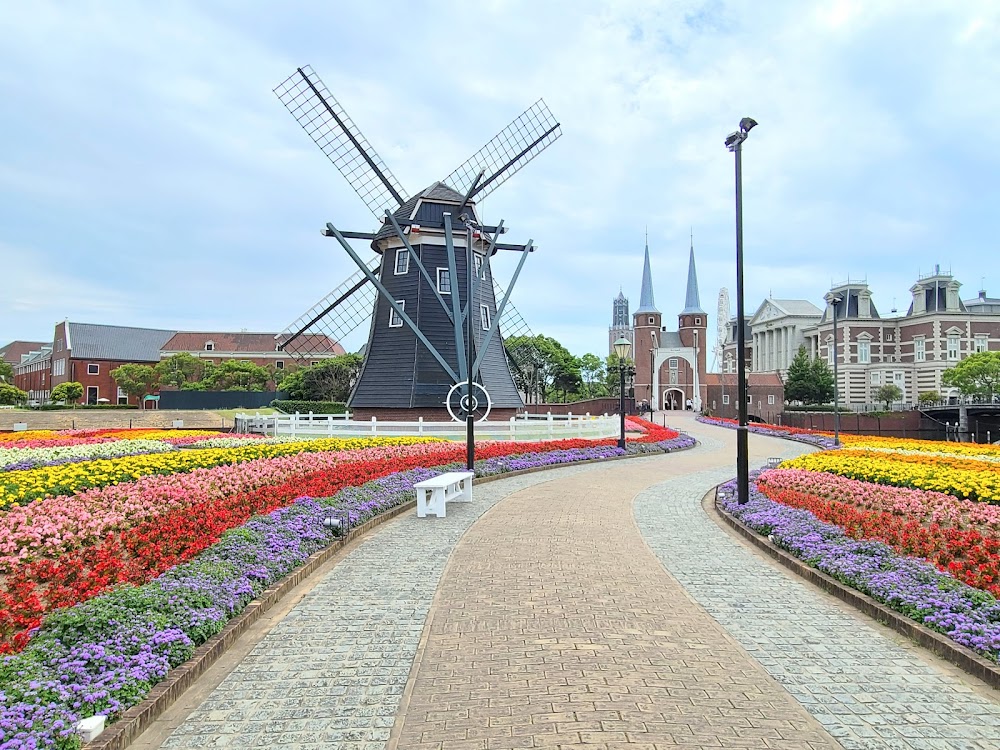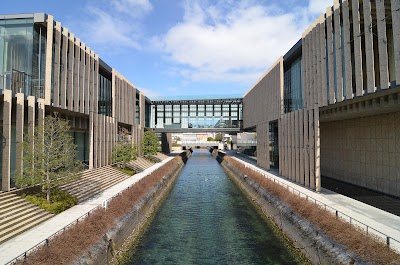Peace Statue (平和祈念像)
Overview
The **Peace Statue**, located in Nagasaki Prefecture, Japan, stands as a poignant symbol of hope and a solemn reminder of the devastating impacts of war. Erected in 1955 within the serene confines of **Nagasaki Peace Park**, the statue pays tribute to the victims of the atomic bombing on August 9, 1945, while simultaneously serving as a powerful plea for global peace.
Standing at an impressive **9.7 meters (32 feet)** tall, the statue was designed by the esteemed Japanese sculptor **Seibo Kitamura**. Cast in bronze, the figure depicts a seated man with one arm raised upwards and the other extending horizontally. Each gesture is imbued with profound symbolic meaning: the raised right arm points to the sky, serving as a caution against the threat of nuclear weapons, while the horizontal left arm embodies the desire for eternal peace. Additionally, the statue's closed eyes represent a moment of silent prayer for the souls lost, and its seated posture signifies calm resilience and reflection.
The location of the **Peace Statue** within **Nagasaki Peace Park** is historically significant. The park is situated near the hypocenter of the atomic bomb explosion during World War II, an event that resulted in the tragic loss of tens of thousands of lives. The establishment of the park and the installation of the Peace Statue aimed to transform this site of tragedy into a place of remembrance and reconciliation. Visitors can also explore the nearby **Nagasaki Atomic Bomb Museum**, which offers an educational experience about the events surrounding the bombing and the profound suffering it caused.
Every year on **August 9th**, Nagasaki hosts a **Peace Ceremony** at the park, where locals, tourists, and dignitaries gather to commemorate the bombing and renew their commitment to advocating for peace. The **Peace Statue** serves as the centerpiece of this ceremony, with attendees offering flowers and prayers at its base. The event is a moving spectacle, featuring speeches, moments of silence, and the release of doves, symbolizing the collective hope for a world free of nuclear weapons.
For foreign tourists, the **Peace Statue** not only offers a chance to pay respects but also invites reflection on the universal quest for peace. The tranquil atmosphere of **Nagasaki Peace Park**, combined with the powerful imagery of the statue, creates a contemplative environment. Nearby inscriptions in multiple languages provide context and history, ensuring that international visitors can fully grasp the message conveyed by this iconic monument.
An intriguing aspect of the **Peace Statue** is its role in international diplomacy and cultural exchanges. Various countries have gifted sculptures and memorials to Nagasaki, which are also displayed within the park, underscoring the global resonance of its peace message. These contributions create a diverse and meaningful landscape, showcasing different artistic expressions of peace from around the world.
Moreover, the **Peace Statue** has inspired peace movements and memorial designs globally. Its design and symbolic elements serve as a source of inspiration for artists and activists dedicated to promoting peace and remembering the victims of conflict. The statue stands as a testament to past horrors while serving as an enduring call for a future free from such tragedies.
Visiting the **Peace Statue** and **Nagasaki Peace Park** provides a deeply moving experience that invites visitors to consider the human cost of war and the importance of striving for global unity and disarmament. With its serene and powerful presence, the statue remains a timeless beacon of peace, urging all who encounter it to reflect on the past and work towards a peaceful future.
In conclusion, a visit to the **Peace Statue** in Nagasaki Prefecture transcends mere sightseeing; it is a journey through history, a moment of remembrance, and a call to action for peace. Whether you are a history enthusiast, a peace activist, or a traveler seeking meaningful experiences, the **Peace Statue** offers a profound encounter that will resonate long after your visit. Its messages of warning, hope, and resilience serve as reminders of both the fragility of peace and the enduring strength of the human spirit.


